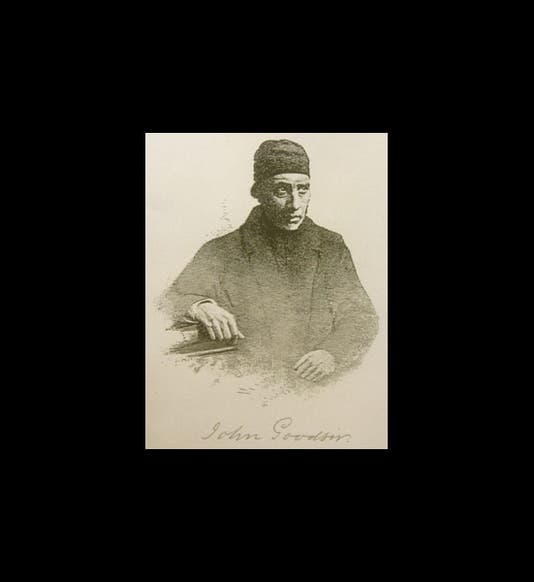Scientist of the Day - John Goodsir
John Goodsir, a Scottish biologist and anatomist, was born Mar. 20, 1814. Goodsir became professor of anatomy at the University of Edinburgh in 1846. He was bound to succeed in the position, for he replaced the worst anatomy professor Scotland had ever seen, Alexander Monro tertius, who so disgusted Charles Darwin in his short time at Edinburgh that he determined to have nothing to do with human anatomy for the rest of his life. Goodsir was an excellent instructor, and during his tenure he made people forget all about Munro tertius. Goodsir was primarily responsible for introducing cell theory into Great Britain; more than that, he put it on a much firmer basis than had Schleiden and Schwann, the acknowledged German founders of cell theory, because Goodsir was much more emphatic in pronouncing the cell the basic unit of life, and giving short shrift to those who argued that fibers were just as important as cells. It is notable that when Rudolf Virchow published his classic Cellular Pathology in 1859, he dedicated it to Goodsir and passed over his countrymen Schleiden and Schwann, who were still very much alive.
While at Edinburgh, Goodsir became good friends with Edward Forbes, the noted authority on marine invertebrates and a whimsical artist, whom we celebrated as a Scientist of the Day two years ago. After seeking a teaching position in Edinburgh for many years, Forbes was finally appointed professor of natural history at Edinburgh in 1854, succeeding Robert Jameson, another teacher whom Darwin strongly disliked. Goodsir (like many in Edinburgh) was devastated when Forbes died less than 7 months after winning his professorship, at the age of just 39. Forbes was buried in Dean Cemetery in Edinburgh, one of the most impressive cemeteries in the entire world, if one admires cemeteries that have elegant but restrained taste in monuments. Goodsir lived until 1867, but when he died, he too was buried in Dean Cemetery, right next to Forbes. In the photo (second image), Forbes's small truncated obelisk is on the left, and Goodsir’s is on the right, with a portrait relief that we can see better in a detail (third image). The only other decent portrait we have of Goodsir is a small sketch made by Forbes that is in the Natural History Collections at Edinburgh (first image). It was the basis for a posthumous oil portrait that is also at Edinburgh (fourth image), but it lacks the direct charm of Forbes’ pencil drawing.
Dr. William B. Ashworth, Jr., Consultant for the History of Science, Linda Hall Library and Associate Professor, Department of History, University of Missouri-Kansas City. Comments or corrections are welcome; please direct to ashworthw@umkc.edu.










